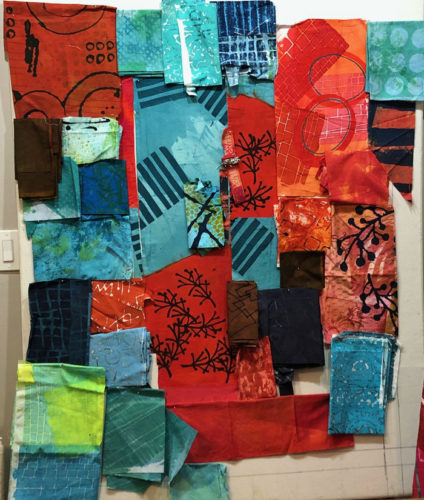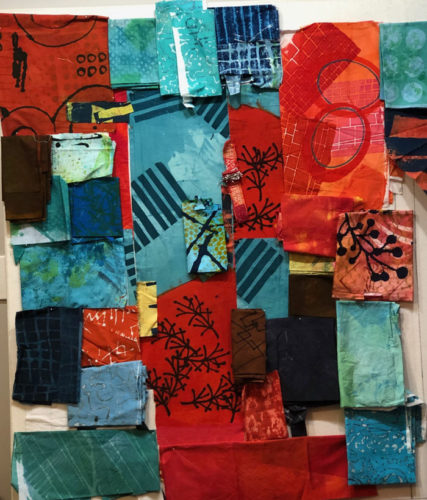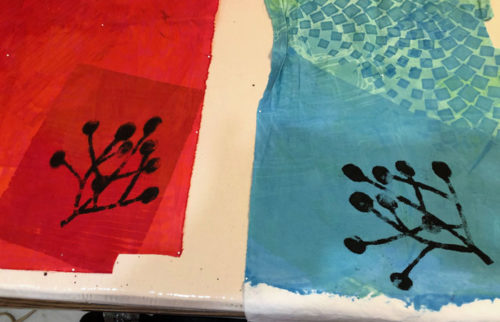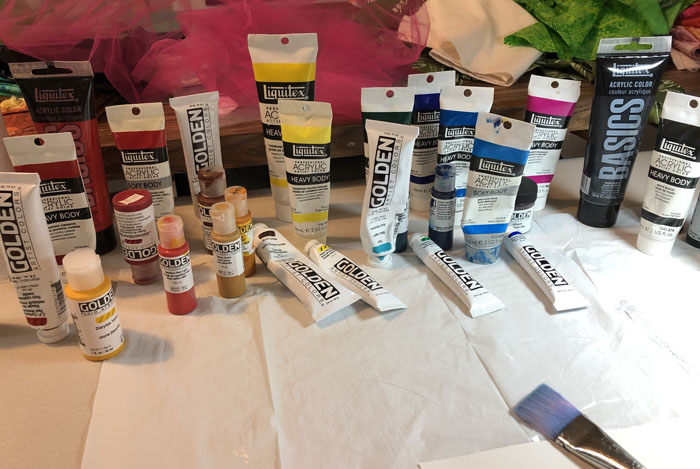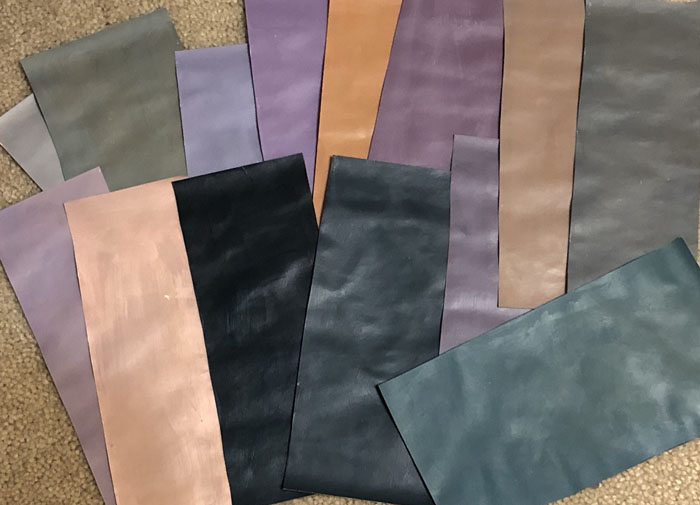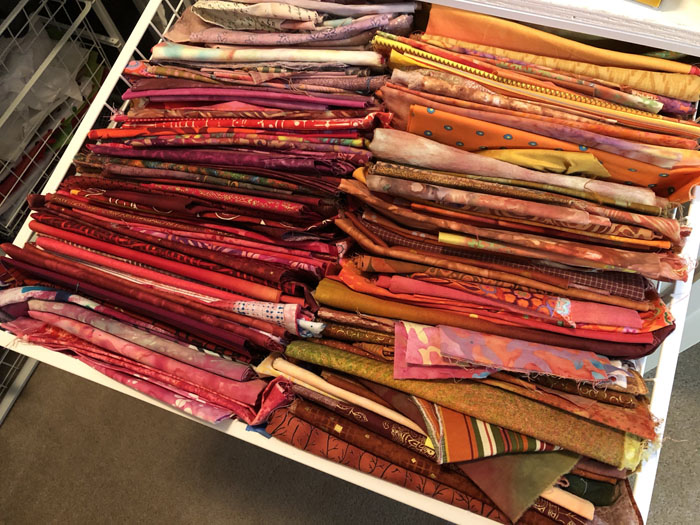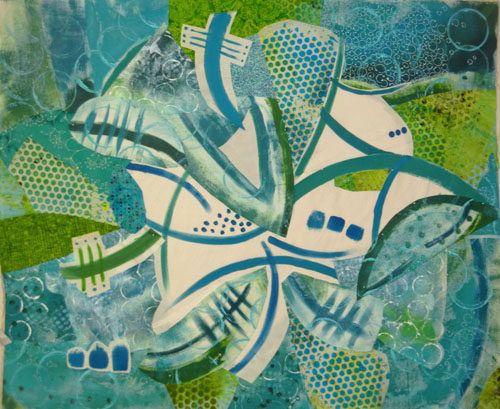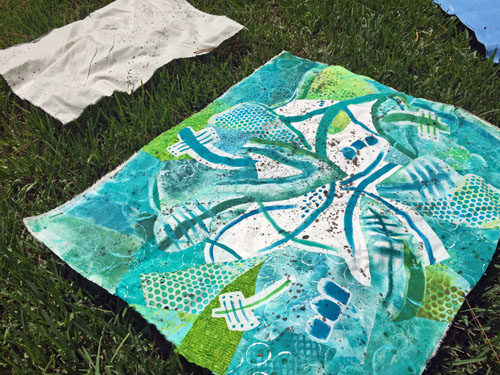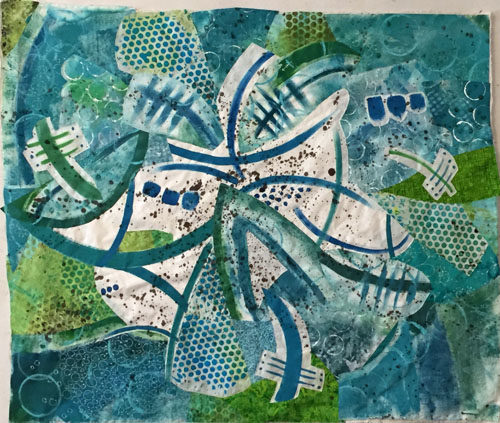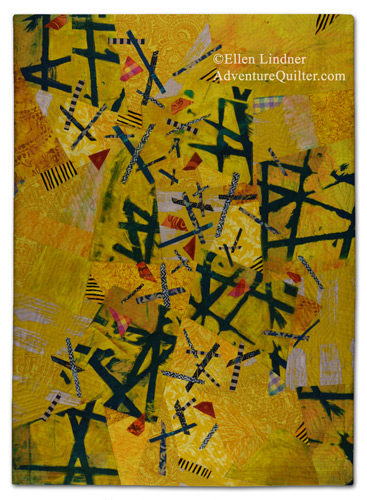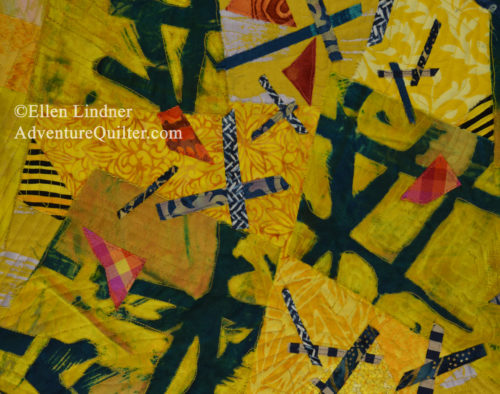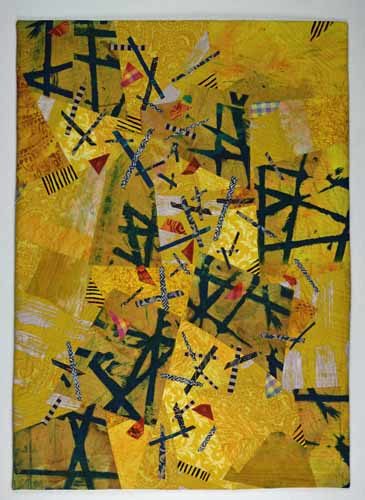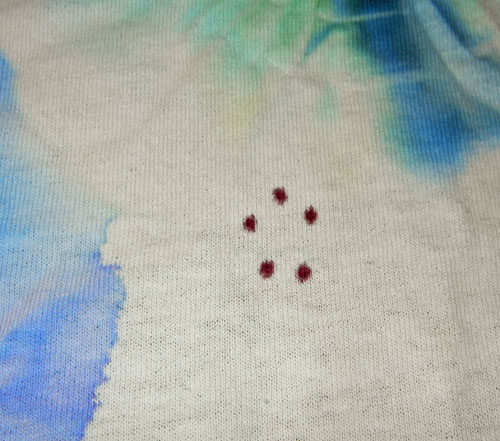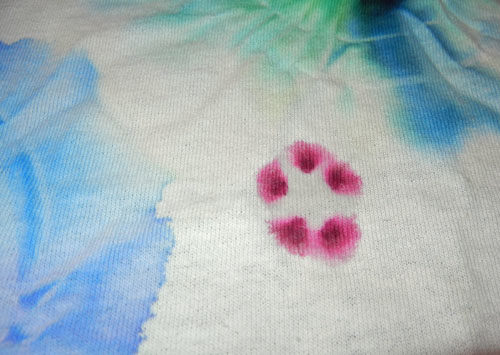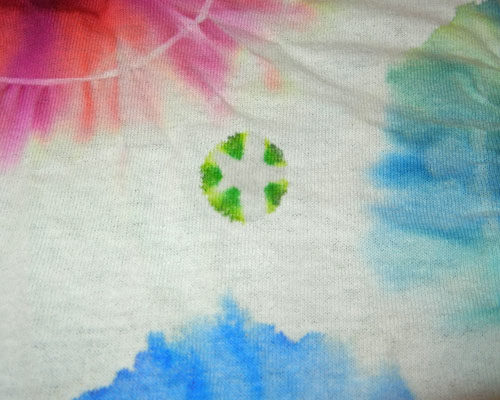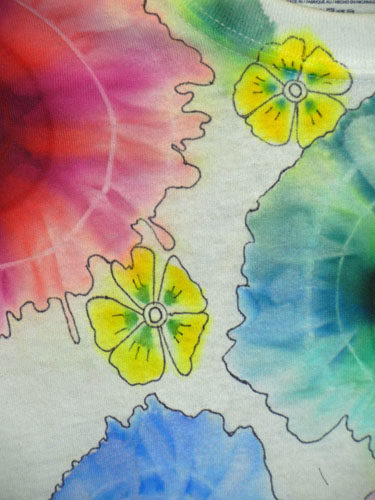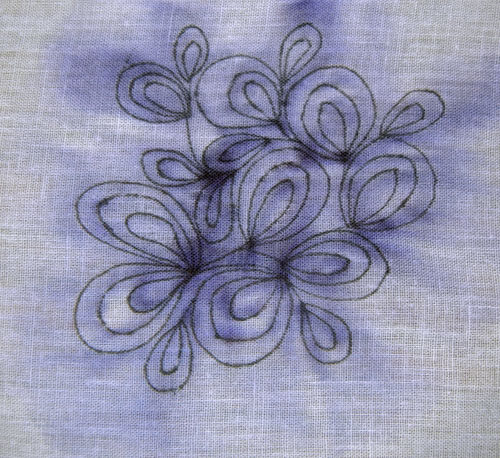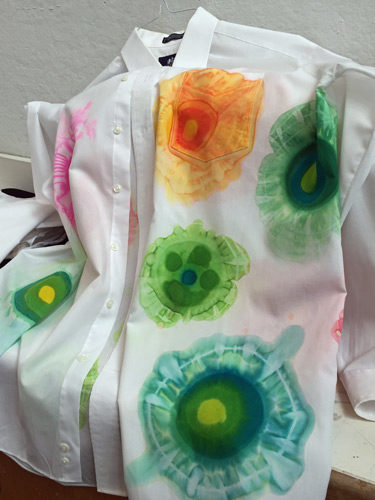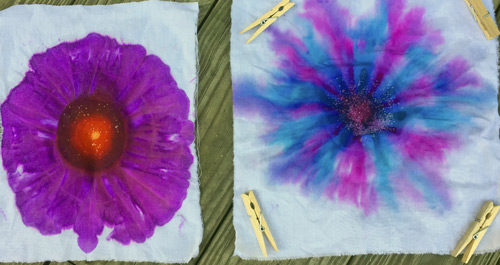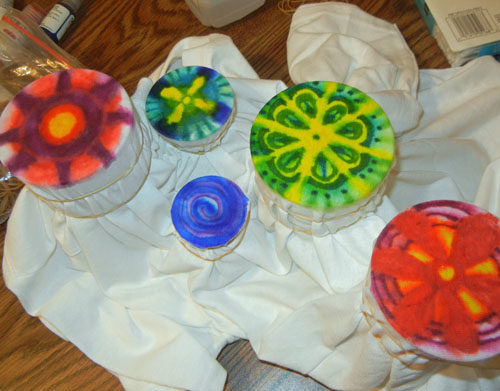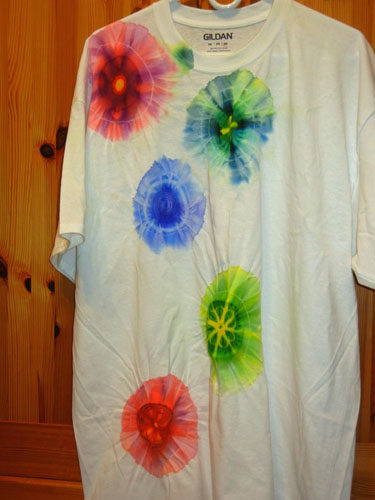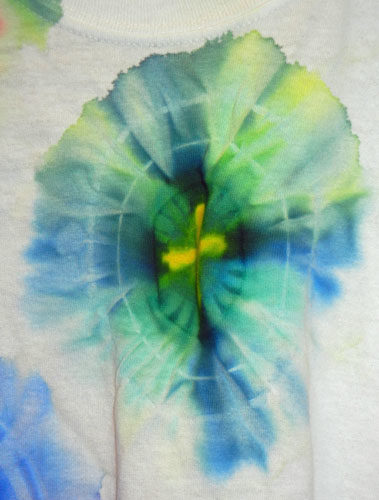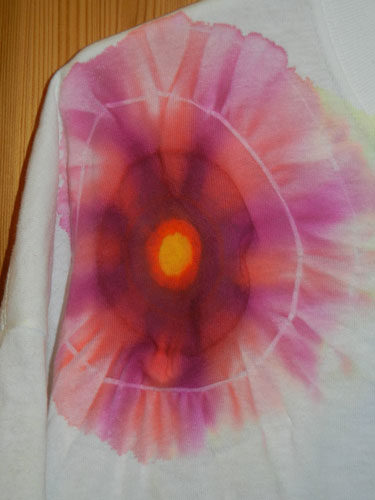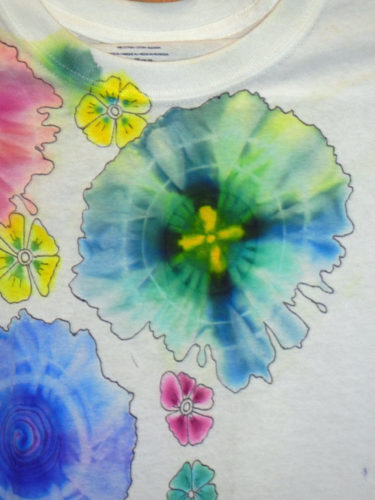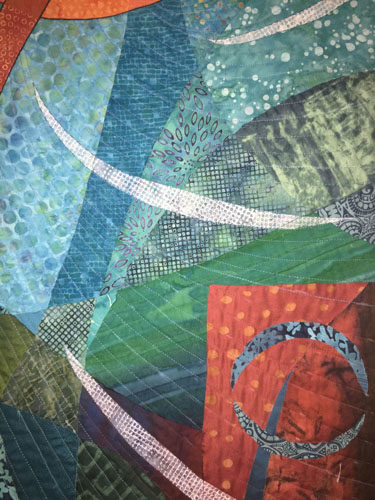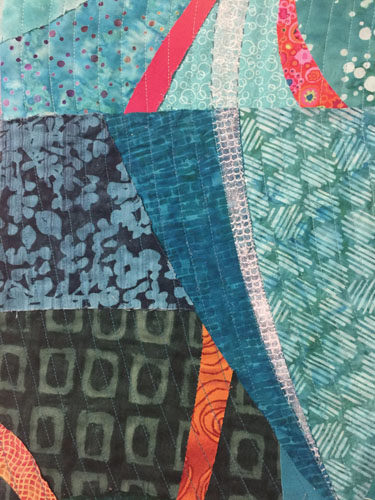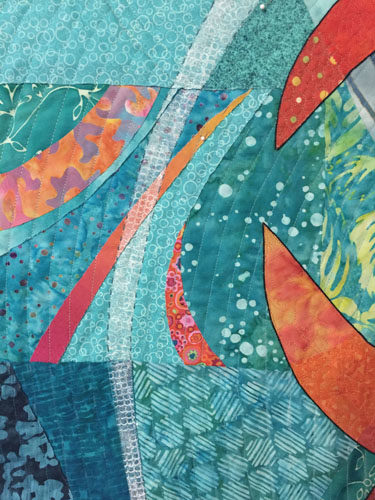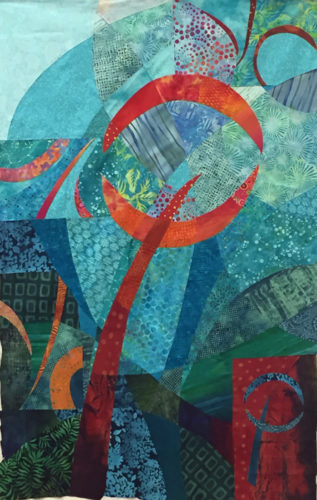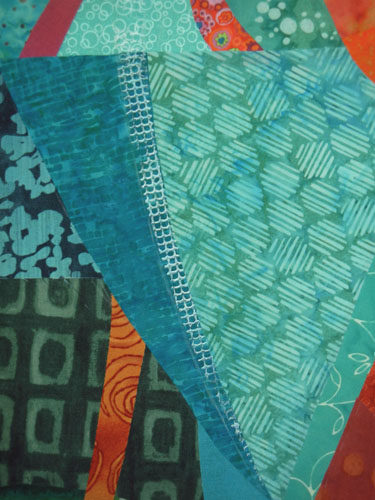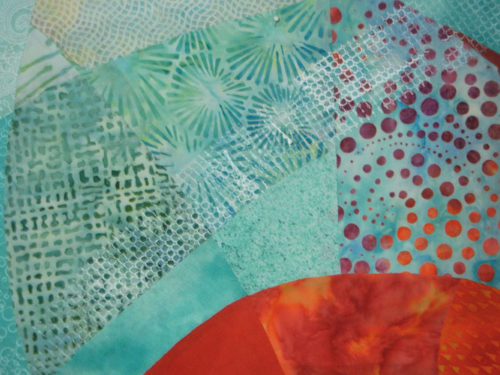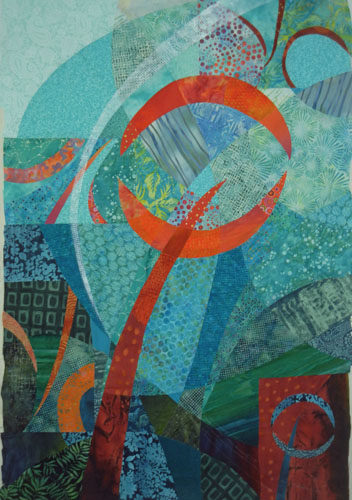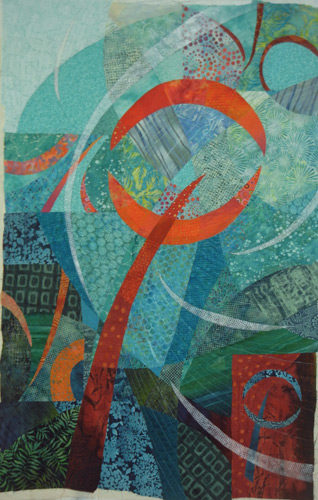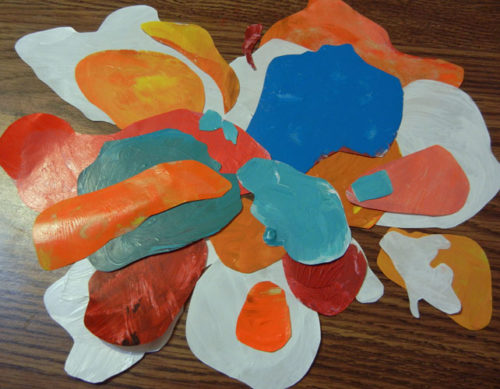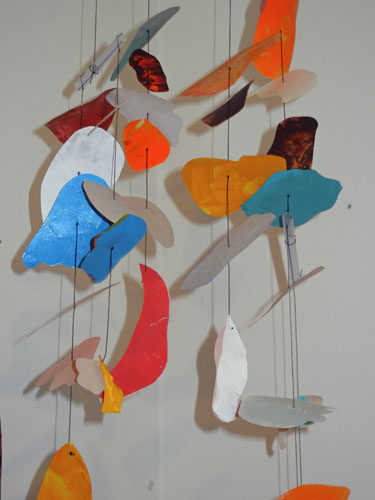After working with some beautiful hand-painted fabrics recently, I decided to try my hand at creating some of my own. Although I had painted fabric before, I had never done so with a really specific purpose. This time I wanted to:
– Paint at least 2 large pieces of fabric that would coordinate,
– Paint at least one of them with large scale high contrast designs.
That second one turned out to be the most difficult, so I’ll show you the easier one first.
I was working with a variety of blue-greens, greens, and blues and wet this piece of fabric before painting it very loosely.
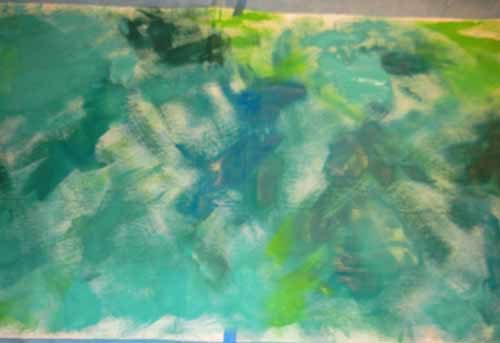
I hoped the wetness would cause the colors to move and shift a little and I think maybe it did.
Next, I wanted to add some low contrast texture. I did so by stenciling soft blue-green paint through a scrap of gridding.
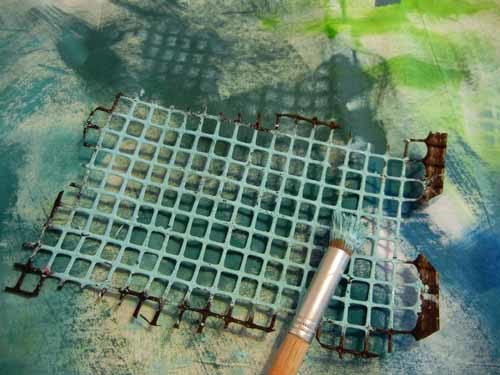
I really liked the effect.
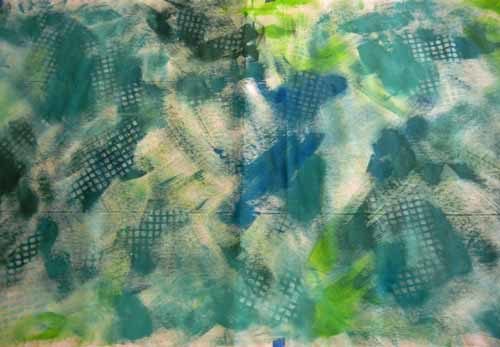
I also wanted to add a contrasting color and selected a dull orange. The complement of blue, I thought this would work well. Again, I stenciled it on; this time with a commercial stencil left over from my scrapbooking days.

Not bad, I thought.
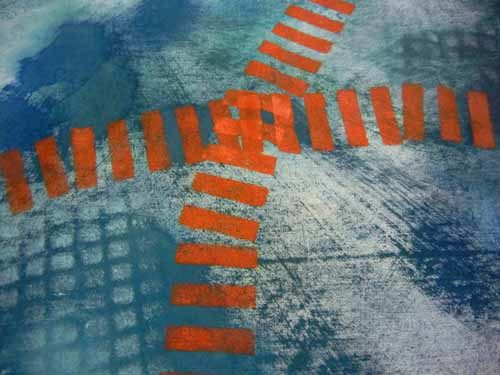
But, as the orange paint dried it turned much darker, to more of a rust color. I decided to overpaint with brighter oranges, which helped.
I tried 3 more things that I forgot to photograph:
– Drawing with a syringe. A big fail! I wet it down and wiped it nearly all the way off.
– Adding small dots. Okay, but not exciting.
– Smearing on white paint over everything. This was pretty interesting, but heavier than I wanted. Again, I sprayed it down and wiped much of it off. That left a faint film which was unifying. I liked it.
Finally, I added white rings stamped with a nearby roll of painters tape.
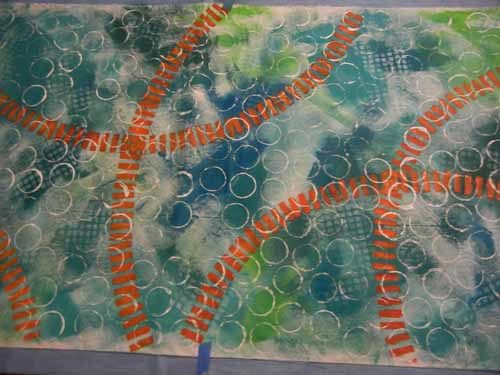
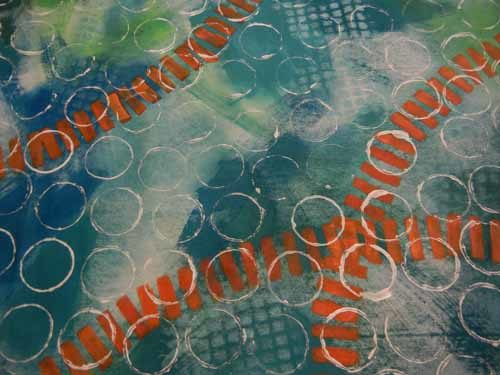
I think that was pretty successful.
A few observations and lessons learned:
– This takes a lot longer than I had imagined. It’s worth the purchase price of gorgeous fabric created by OTHER people, when I can find it.
– I’ll definitely do more of this.
– I have a lot to learn. Chief among my questions is how to get saturated colors without making the fabric stiff and without using lots of paint. I’ll need to do some research.
The bottom line is that I can definitely use this fabric and I met my goals with it. Yippee!
Ellen Lindner
P.S. I used mostly Pebeo Setacolor Transparent, along with some artists acrylic paints.


